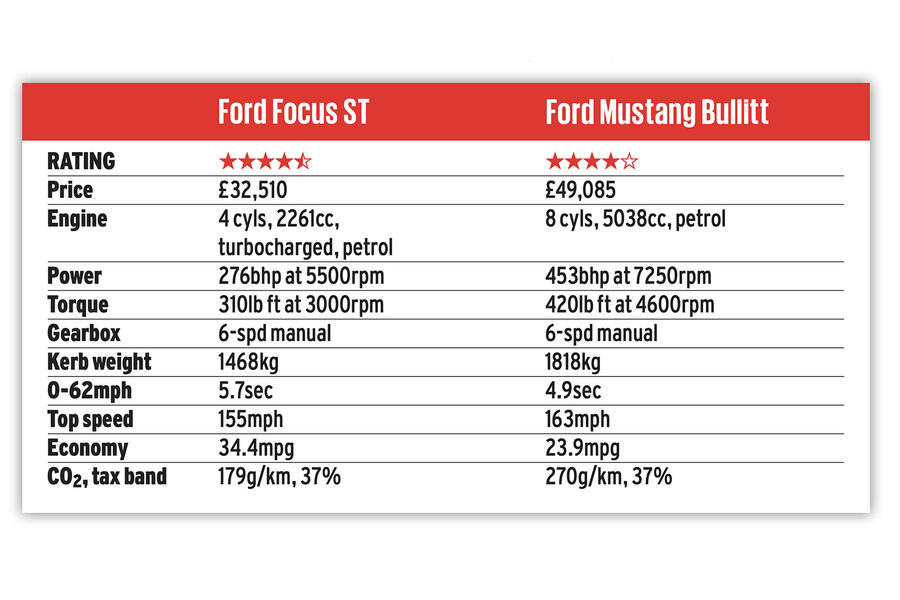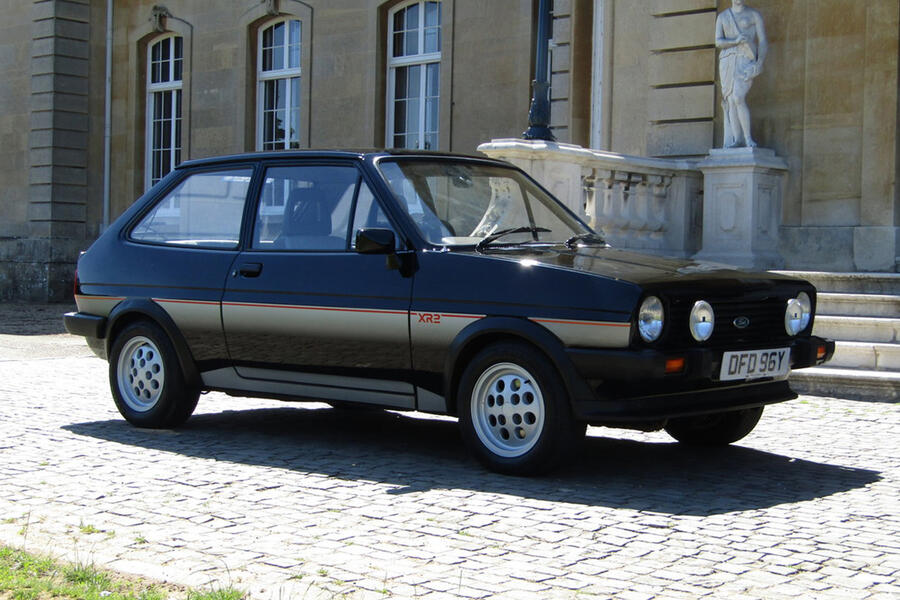For a moment, I confess, I did wonder what the bloody hell I was doing on that road, trying to follow a 5.0-litre V8 coupé in a hatchback with half the number of cylinders and less than half the engine capacity. And then I remembered: it was interesting, that’s all. Clearly my little long-term Ford Focus ST was not going to keep up with a mighty Mustang Bullitt, and nor should it be expected to, given that its svelte sister costs over half as much again and has more than 60% more power. But it was interesting nonetheless.
Interesting because Ford, the company that brought motoring to the masses more than a century ago, is also the company whose record in producing fast and fun but affordable cars down the decades is second to none. In the Mustang’s case, as the original pony car back in 1964, it started a beloved sub-genre that still exists to this day and in which it remains the benchmark performer. As for the Focus, it too can be traced right back to the early days of its category – if not to the very start, then certainly a full 40 years to the birth of the Escort XR3.
Ford has long produced two entirely different and diverse ways of entertaining its drivers, so today the question is this: just how close can a quite well-resolved hatch get to matching the thrills of a purposebuilt sports coupé? Or is the Mustang in such an entirely different league, and the performance void between them so large, it actually makes the sleek coupé look cheap?
On paper, it’s not looking good for the Focus. Sad to say it though I am, the Mustang is the only classically configured car of its kind left on sale in the UK: a front-mounted engine, namely a normally aspirated V8, driving the rear wheels through a manual gearbox, just like the original ’Stang 56 years ago. The Focus does actually have a Mustang engine in it, but it’s the relatively puny 2.3-litre four that dare not speak its name in traditionalist circles where the bent-eight purists and ‘no replacement for displacement’ mob still doggedly defend their small and dwindling enclave. And while, yes, the Focus too has a manual gearbox (thank goodness), by directing its power forward and not rearward it is therefore incorrect wheel drive. Drive this engine in a Mustang and you spend all your time wishing it were a V8; drive it in a Focus and does it not follow you’ll therefore spend all your time wishing it were a Mustang?




























Join the debate
Add your comment
These stories based around
These stories based around the premise of whether one fast car can keep up with another fast car on a public road are utterly absurd.
if this is all that is left, Autocar really may as well pack up and go home.
Don't see the point in this
Not Seeing Cross Shoppers Either
Agree si73, not many people going to look at these two together. Here in the US it's got to be the Bullitt, back in North Yorkshire it's got to be the ST. I guess the compo is because for the first time both are available in the UK? Here in the US most enthusiasts would go for the Shelby 350 (not the 500), the BUllitt is a marketing ploy to feed off the Steve McQueen 'cool', much like Aston and the 'Bond' association. Today's online journalism requires daily product, hence pieces like this. Question is, which would be on your driveway?
On my driveway would
What do we reckon of the Mustang 4 pot though, would it be a better drive with less weight up front?
Mustang Bullitt of course.
Mustang Bullitt of course. You'd rather be seen in a everyday Focus? Seriously....please.